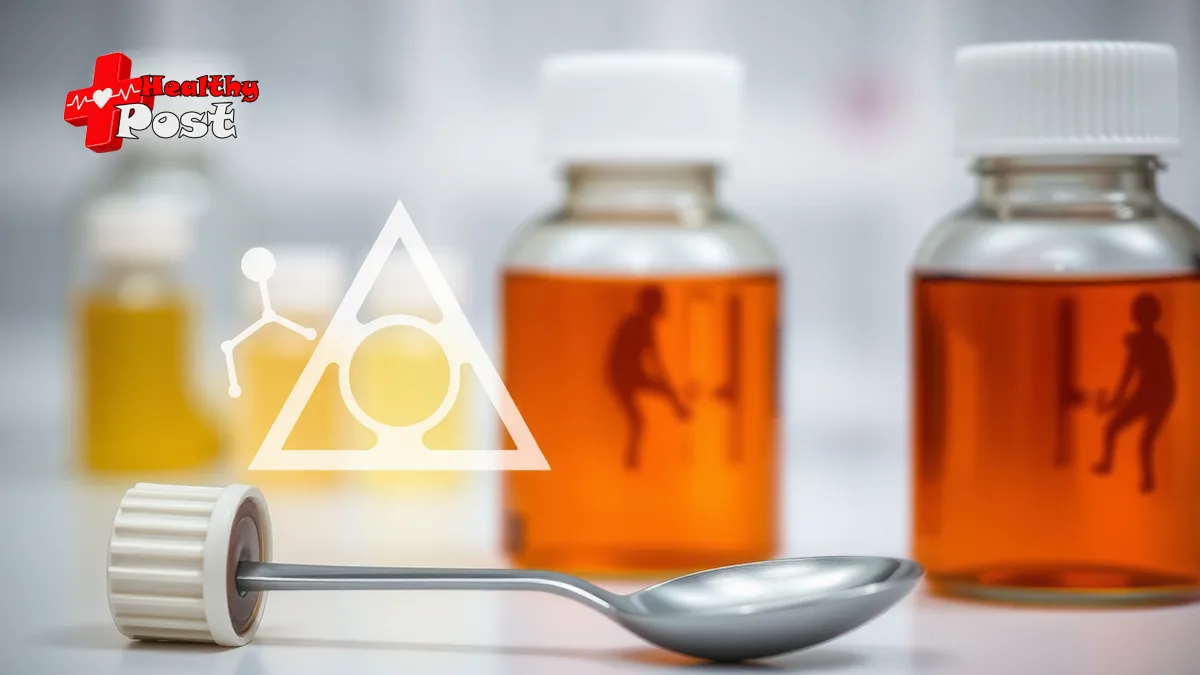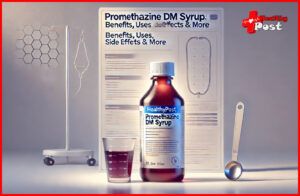
What is Diethylene glycol, Is it usage in cough syrup
If you’ve been hearing about “cough syrup contamination” in the news and wondering what’s behind it, you’re not alone. One term that keeps coming up is the main focus keyword: diethylene glycol. In simple terms, diethylene glycol is a chemical that has legitimate industrial uses—but it does not belong in medicines like cough syrups. In this friendly, easy-to-understand guide, we’ll explain what diethylene glycol is, why it has shown up in some syrups historically, what you can do to stay safe, and how to make confident choices for yourself and your family.
Our goal is to provide trustworthy information that’s practical and empowering—no jargon, no scare tactics. Just clear facts and helpful steps.
Quick Summary (For Busy Readers)
- Diethylene glycol is a toxic chemical that should not be used in cough syrup.
- Safe, approved ingredients like propylene glycol and glycerin are typically used in syrups—not diethylene glycol.
- Contamination can occur when materials are adulterated or substituted, often unintentionally due to supply chain issues.
- Reputable manufacturers follow strict standards to keep products safe.
- You can reduce risk by choosing trusted brands, checking recalls, and speaking with your pharmacist or healthcare provider.
What Is Diethylene Glycol?
Diethylene glycol (often abbreviated as DEG) is a solvent and humectant used in various industrial applications, such as antifreeze, lubricants, and some manufacturing processes. It is a clear, colorless, syrupy liquid with a slightly sweet taste—which unfortunately can make it deceptively dangerous if ingested.
Key point: Diethylene glycol is toxic to humans. Even small amounts can cause serious harm, including kidney failure, nervous system damage, and in severe cases, death. That’s exactly why it must not be present in medicines, especially products for children like cough syrups.
Is Diethylene Glycol Used in Cough Syrup?
The short answer: No—diethylene glycol should not be used in cough syrup.
Cough syrups often contain solvents or humectants to dissolve active ingredients and keep the liquid stable and pourable. The approved and commonly used ingredients for this purpose include:
- Propylene glycol (PG)
- Glycerin (also called glycerol)
- Sorbitol solutions
Diethylene glycol, however, is not an acceptable alternative. Unfortunately, there have been incidents in different countries where cough syrups were contaminated with diethylene glycol or a related toxic compound (ethylene glycol). These cases often happen due to improper sourcing of raw materials (for example, when propylene glycol or glycerin are adulterated with cheaper, toxic glycols) or due to inadequate quality controls.
Reputable drug manufacturers test their ingredients to ensure that diethylene glycol is not present. Health authorities around the world, including the World Health Organization (WHO) and national regulatory agencies, issue strict standards and alerts to prevent such contamination.
Why Does Diethylene Glycol End Up in Medicines Sometimes?
This is a painful question, but it’s important for prevention:
- Adulteration or substitution: A supplier may (fraudulently or negligently) provide a cheaper ingredient that contains diethylene glycol, especially if they don’t follow pharmaceutical-grade quality standards.
- Inadequate testing: If manufacturers or suppliers skip or mishandle mandatory testing, contaminants can go undetected.
- Supply chain complexity: Global sourcing makes transparency and consistent quality control more challenging—though not impossible when the right standards and audits are followed.
None of these are excuses—just explanations of how errors happen. Robust quality systems, independent testing, and transparent suppliers help ensure your medicines are safe.
Diethylene Glycol vs. Safe Syrup Ingredients
To make this clearer, here’s a simple comparison to help you understand the differences:
| Ingredient | Common Use in Syrups | Toxicity Risk if Ingested as Intended | Regulatory/Quality Note | Typical Status in Cough Syrups |
|---|---|---|---|---|
| Diethylene glycol | No | High (toxic) | Strictly unacceptable in medicines | Should not be present |
| Ethylene glycol | No | High (toxic) | Strictly unacceptable in medicines | Should not be present |
| Propylene glycol (PG) | Yes | Low when used as directed | Widely accepted as a pharmaceutical excipient | Common and acceptable |
| Glycerin (Glycerol) | Yes | Low when used as directed | Widely accepted as a pharmaceutical excipient | Common and acceptable |
| Sorbitol solutions | Yes | Low when used as directed | Widely accepted as a pharmaceutical excipient | Common and acceptable |
Important: The safety of propylene glycol, glycerin, and sorbitol depends on pharmaceutical-grade sourcing and proper manufacturing. These ingredients are tested to ensure contaminants like diethylene glycol are not present.
A Brief Look at Notable Incidents (For Context)
Sadly, diethylene glycol contamination is not just theoretical—it has caused real harm in several historical and modern cases. Notable examples have included tragedies where children were affected after consuming contaminated syrups. These events triggered global reforms, tighter regulations, and widespread awareness.
We won’t dive into graphic details, but the key takeaway is this: regulatory oversight, strict testing standards, and responsible manufacturing save lives. This is why choosing reputable brands and staying informed matters.
How Regulators and Manufacturers Prevent Contamination
- Pharmacopoeial standards: Quality benchmarks (such as those in recognized pharmacopoeias) specify strict limits and testing procedures to ensure excipients like glycerin and propylene glycol are free of diethylene glycol and ethylene glycol.
- Supplier qualification: Manufacturers audit and qualify raw material suppliers, verifying certifications and test data.
- Certificates of Analysis (CoA): Each lot of excipient should come with documented testing results from credible labs.
- Incoming material testing: Reputable manufacturers perform their own verification testing in addition to reviewing supplier documents.
- Batch traceability: If a problem is detected, traceability enables targeted recalls and transparent communication.
These systems are designed to catch problems before products reach you.
5 Clearly Numbered Benefits (For You and Your Family)
These benefits are not about using diethylene glycol—remember, it should not be in medicines. Instead, they’re the benefits of understanding this topic and choosing safe, responsibly made products.
1) Safer Purchases and Fewer Worries
- When you know that diethylene glycol doesn’t belong in cough syrup, you can prioritize trusted brands and pharmacies.
- Real-life example: A parent choosing a well-known, regulated brand from a licensed pharmacy—rather than a random online seller—significantly reduces the risk of tainted products.
- Benefit to you: Peace of mind that you’re selecting syrups made under strict controls.
2) More Confident Conversations with Healthcare Providers
- Understanding the basics empowers you to ask smart questions: “Is this brand well-regulated?” “Has it been subject to any recalls?”
- Real-life example: You bring a bottle to your pharmacist and ask about its sourcing and safety profile; they can quickly check recall databases and confirm.
- Benefit to you: You feel informed and supported, not overwhelmed.
3) Reduced Risk for Children and Vulnerable Adults
- Kids, older adults, and people with kidney or liver conditions are more vulnerable to toxic exposures.
- Real-life example: Choosing pediatric syrups from reputable sources and following dosing guidelines reduces risk and improves outcomes.
- Benefit to you: A safer home medicine cabinet for those who need extra protection.
4) Supporting Ethical and Responsible Companies
- Your purchasing choices reward manufacturers that invest in testing, supplier audits, and quality systems.
- Real-life example: A company that publishes quality commitments and responds transparently to safety concerns earns customer trust and loyalty.
- Benefit to you: You help build a safer marketplace where bad actors struggle to survive.
5) Faster, Better Decisions in a Recall or Safety Alert
- If a health authority issues an alert, you’ll know what to check and what steps to take.
- Real-life example: You hear about a recall, verify your product’s batch number, and follow instructions—no panic, just practical action.
- Benefit to you: You can act quickly and responsibly, protecting your household.
How to Choose Safe Cough Syrup: A Friendly Checklist
- Buy from licensed pharmacies or trusted retailers (online or in-store).
- Prefer established brands with strong safety reputations.
- Check the packaging for:
- Manufacturer name and contact information
- Batch/lot number and expiry date
- Proper seals and intact packaging
- If something looks “off” (odd smell, unusual consistency, poor labeling), don’t use it—ask your pharmacist.
- Stay aware of official recalls or safety advisories from your country’s health authority.
- For children, use age-appropriate products and dosing tools. When in doubt, ask your pediatrician.
What to Do If You Suspect a Problem
If you think a product might be unsafe:
- Stop using it immediately.
- Keep the bottle and receipt, and note the batch/lot number.
- Contact your pharmacist or healthcare provider for guidance.
- Report the issue to your national health authority or consumer safety agency (many have online portals for quick reporting).
- If someone has taken a suspicious product and feels unwell, seek medical help right away.
Common early symptoms of toxic glycol exposure can include nausea, vomiting, abdominal pain, dizziness, or changes in urination—however, these can also be caused by many other things. The safest move is to get professional medical advice promptly.
FAQs: Diethylene Glycol and Cough Syrup
- Is diethylene glycol ever okay in medicine?
- No. It’s a toxic substance and should not be present in medicines, including cough syrup.
- Why do we hear about it in the news?
- Because contamination incidents—though rare in well-regulated markets—can cause serious harm. Public warnings help prevent further cases.
- Are propylene glycol and glycerin safe?
- When pharmaceutical-grade and used correctly, yes. They are widely used excipients and are not the same as diethylene glycol.
- How can I verify if my product is safe?
- Buy from trusted sources, choose reputable brands, check for recalls, and ask your pharmacist or doctor if you’re concerned.
- What about homemade remedies?
- Avoid homemade syrups for children. Commercial products are formulated and tested for safety and dosing accuracy.
For Parents and Caregivers: Extra Peace of Mind
- Use only pediatric formulations for children and measure doses with the included device (not a kitchen spoon).
- Keep medicines locked away and out of reach.
- If your child has chronic conditions or takes multiple medications, consult a pediatrician before starting any new product.
- If your child doesn’t improve or develops new symptoms, seek medical advice.
For Clinicians and Pharmacists (High-Level Overview)
- Be alert to unusual clusters of unexplained renal injury or metabolic acidosis, especially in pediatric populations, and consider potential toxic excipient exposure among differentials.
- Encourage patients to buy from reputable sources and to check for recall notices.
- Reinforce proper storage and dosing education.
Note: This article does not provide clinical protocols; follow your local guidelines and professional resources.
Key Takeaways About Diethylene Glycol in Cough Syrup
- Diethylene glycol is a toxic chemical with industrial uses. It must not be present in cough syrups.
- Safe syrups typically use approved excipients like propylene glycol and glycerin.
- Contamination can happen when quality systems fail or suppliers are not properly vetted. Reputable manufacturers implement rigorous testing to prevent this.
- You can protect your household by buying from trusted sources, checking for recalls, and consulting healthcare professionals when unsure.

